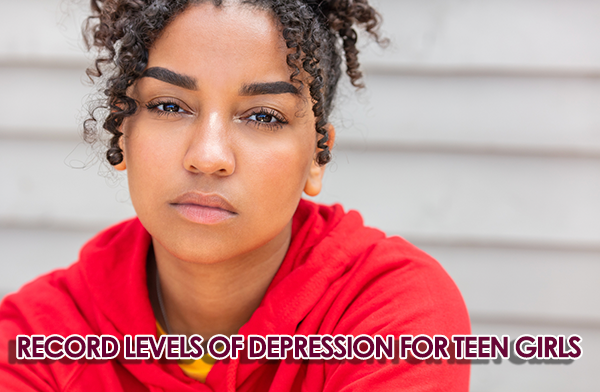
Depression Among Teen Girls on the Rise
A recent CDC study revealed alarming statistics about the mental health of teenage girls. Nearly three in five expressed feeling persistently sad or hopeless in 2021 — a nearly 60 percent increase from 2011. An estimated one in three seriously considered attempting suicide, up early 60% from a decade ago.
Teen girls who identify as LGBTQ+ also report experiencing extremely high levels of mental distress, violence and substance abuse.
The data collection took place in the fall of 2021 after schools returned to in-person learning following the COVID-19 pandemic. Many students at the time were still suffering the impact of social isolation and struggling to catch up on schoolwork after being remote learners for months.
There are several steps parents or caregivers can take if they see signs of depression in their teenagers and want to support them:
Be a good listener. Be purposeful about listening to your teen, and be comfortable with silence. Silence can an important tool to connect with your teenager and fully understand what they are going through. They may take time to open up so the more you can listen, instead of speaking for them or jumping to assumptions, the better.
Emphasize social support. Social and emotional connectivity is likely one of the most powerful weapons against significant stress and sadness. Studies have found strong links between a lack of parental and peer support and depression during adolescence.
Help them evaluate how they use social media. Many experts agree that the use of social media could play a role in increased depression among teen girls. Teenage girls are more likely to engage in social media and use it as a source of their self-esteem.
Ask your child what they tend to do and look at on social media. Are they connecting with friends or strangers? Help your teen understand if social media makes them sad. Ask them when they tend to feel the need to go on social media. Do they use it as a distraction from what’s happening in their lives, or because they have some free time in their day? Identifying answers to these questions will help you and your teen understand how they use social media in their daily lives and how they can make a positive change.
Teach Your Teen to Recognize their Feelings. Learning to recognize and label feelings doesn’t come automatically for everyone. But kids can learn ways to help themselves when they are experiencing anxiety or depression. Teens can learn to appreciate how hugging their dog, playing a board game or talking with their parent can help reduce anxiety, once they understand the feelings.
Seek professional help. One benefit of the pandemic is that it encouraged more openness about getting help for mental health. You can ask your teenager’s pediatrician or primary care physician for a recommendation for a therapist, or search online. The more people who can watch out for your child, listen to them and try to help, the better off their mental health will be in the long run.
It’s an incredibly difficult time to be a teenager, especially a teenage girl. But parents can do their best to support their daughters by identifying potential signs of depression or anxiety and getting them the help that they need as soon as possible. With more support and attention from their immediate community, they may begin to realize they aren’t as alone as they think.
Resources:
CDC: What Works in Schools Program
What Works In Schools Program | DASH | CDC
National Institute of Mental Health
NIMH » Teen Depression: More Than Just Moodiness (nih.gov)
HEARD Alliance
www.heardalliance.org



